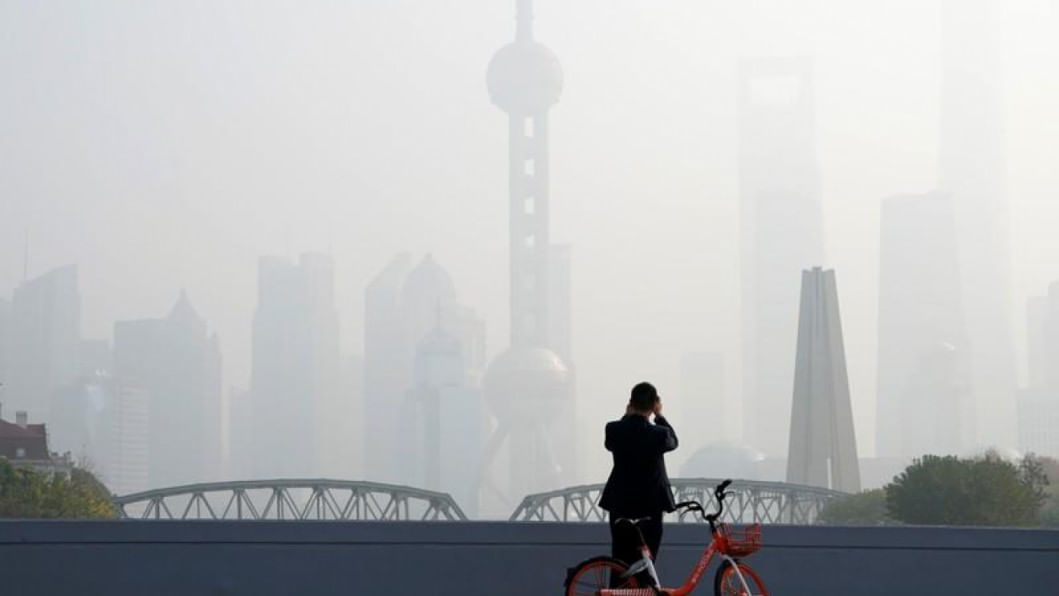The pollution made in China

I followed with interest the recently concluded COP27, which seemed to carry an air of urgency. Perhaps the biggest takeaway from this year's climate conference was the announcement of an agreement by rich countries to finance the loss and damage fund to vulnerable countries suffering the impacts of climate change. This would account for issues such as the severe floods in Bangladesh, India, Pakistan and other parts of South Asia, which many believe were the result of a changing climate.
Such a fund would have been unthinkable five years ago; it is a surprise that Western governments have finally agreed to contribute finance to alleviate the climate issues faced by developing countries, especially as many of these governments are facing financial woes of their own.
Other than this ground-breaking development, COP27 did not seemingly end with tangible progress, although there was a lot of talk about "urgency," the "need to act now," and other well-meaning words.
The discussion on holding the largest emitter to account was notably lacking at the conference. For many years, the US has been the largest carbon emitter in the world, but that place has been taken over by China in recent years, its emissions now being nearly three times that of the US. In fact, China produces around one-third of all carbon emissions on its own. The country has been increasing its use of coal at a rate scientists say will push global warming disastrously beyond the 1.5 degrees Celsius target. Anybody who has visited any of China's major industrial cities and witnessed the smog covering the sky for large parts of the day knows how bad things are in this part of the world.
This has implications for global fashion supply chains. China is still the world's largest exporter of textiles, a mantle that Bangladesh aspires to take on, but is still some way from achieving.
Many major fashion retailers are trying desperately to reduce their supply chain emissions, but this is proving extremely difficult in China, where coal-powered production is not frowned upon in the same way it is in other countries. The result is that global emissions for fashion retailers – 90 percent of which occur in supply chains – are heading in the wrong direction. They are going up, not down.
One US-based political adviser told the Western media in the wake of COP27: "If we don't get hold of China's emissions, the climate will spin out of control."
This is not an anti-China article. China is said to be making huge progress in the development of renewable energy technologies, and the Chinese government has said it is taking sustainability challenges seriously.
The problem is one of scale. There was a recent report in British daily The Telegraph, a well-respected news outlet, that suggested that "China has emitted more carbon dioxide over the past eight years than the UK has since the start of the Industrial Revolution." In fact, between 1750 and 2020, the UK emitted 78 billion tonnes of carbon dioxide into the atmosphere. In comparison, China has emitted 80 billion tonnes of carbon dioxide since 2013, according to The Telegraph.
It is worth remembering that the UK was once the manufacturing capital of the world and a major industrial nation. These are mind-boggling figures that illustrate the rate of development in China over the past decade.
The issue is that China is still considered a developing nation. There are talks of the East Asian country winding down some of its manufacturing bases. Textiles is viewed as a sunset industry, but the sheer scale of that sector means it will take many years to wind down. Meanwhile, China's emissions continue to grow, while other countries slow the rate of growth or turn the rate of growth negative.
These are confusing times we live in. The message seems to be that we will have to make major sacrifices to hit climate targets. Many people say this will entail de-growth. In fashion supply chains, emissions are simply not in line with targets being set by global policymakers, and so fashion brands are being told either to de-couple emissions from production – financially challenging, technically not possible in many cases – or simply slow down.
Slowing down – even if a multinational business was prepared to do so – has huge ramifications for supply chains. The social consequences in terms of lost jobs and economic hardship would be significant. But if that is the road we need to take to protect the planet where we can still run our businesses, then so be it.
All of that said, it would be a bitter pill to swallow if we were to make these sacrifices and they didn't amount to nothing – which is what we might face if China continues along its current path and refuses to play ball. The figures are staring us in the face; unless the country is on the top of the table at events like COP27, we might all be wasting our time and efforts on climate issues.
Mostafiz Uddin is the managing director of Denim Expert Limited. He is also the founder and CEO of Bangladesh Denim Expo and Bangladesh Apparel Exchange (BAE).

 For all latest news, follow The Daily Star's Google News channel.
For all latest news, follow The Daily Star's Google News channel. 










Comments